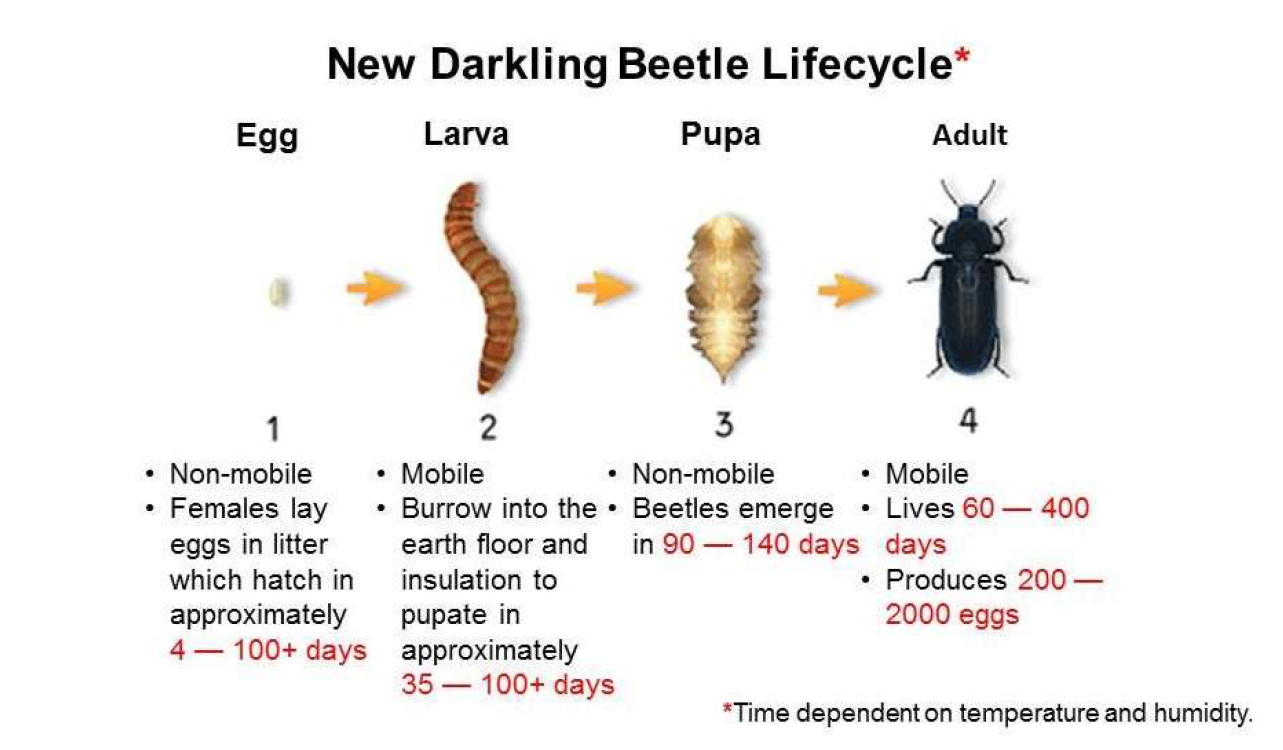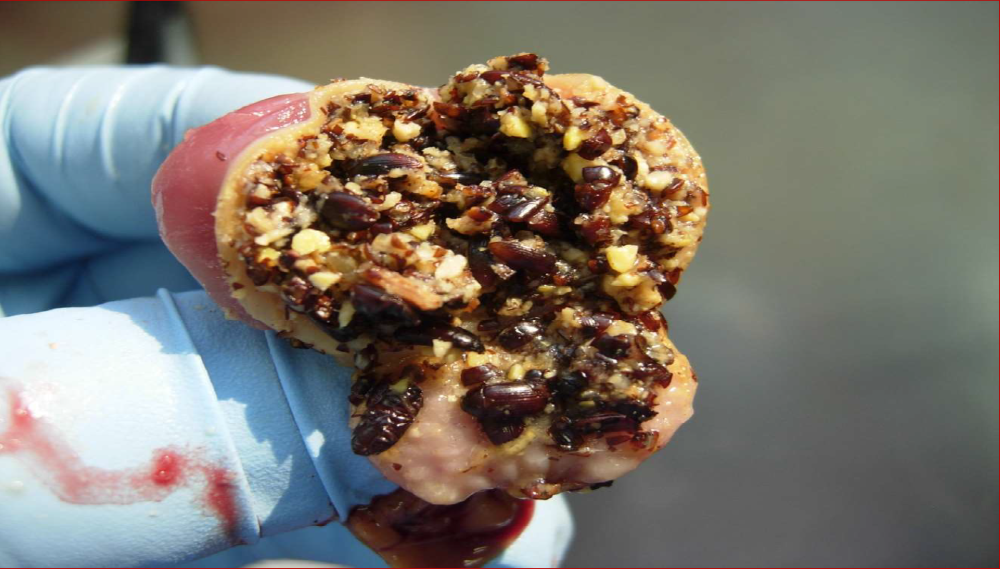Darkling beetles are one of the most difficult pests to get rid of. This is due to several factors: their lifecycle and ability to survive weeks to months in the various stages, the ideal environment that barns provide for them, and the resistance they’ve developed to many pesticides. While full eradication may not be possible, there are ways to get good control of the population and minimize their impact on your flock and your barn.

Figure 1. darkling beetle lifecycle
The problems:
- Darkling beetles are a known vector for over 60 different diseases affecting poultry, including Newcastle disease, avian influenza, Enterococcus cecorum, Marek’s disease, 26 pathogenic types of E. coli, Eimeria spp. causing coccidiosis, etc1. They also contribute to food safety issues as a source of transmission for Salmonella and Campylobacter4.
- Darkling beetles can cause a large amount of structural damage in the walls, where the larvae tunnel through insulation to hide and pupate1. This could lead to increased heating costs and expensive building repairs4.
- As a tropical bug, darkling beetles love the heated barn as much as the chicks do!
- Darkling beetles are grain eaters2 – chicken feed is ideal for them.
- Chicks often eat the beetles before their regular feed, filling their crop with indigestible shells2.

Figure 2: A broiler crop filled with darkling beetles. Photo courtesy of Jim Skinner, Terregena.
Considerations for an effective control program
- Have patience and be consistent! It can take a year or more to get the population under control.
- Keep litter moisture low. This is a key nutrient for larvae and beetles, and reduced litter moisture has the added benefit of reducing ammonia levels2.
- Apply treatments according to the beetles’ cycle, not the barn/birds’ cycle. When you see them, treat them.
- Insecticides can be helpful in reducing the population. Wall-to-wall treatment is critical to ensure the beetles have contact with the insecticide.
- Application and dosage directions must be followed closely, and rotating groups of insecticides should be considered to avoid the development of resistance2.
- The approved list of products can be found using the online search function of the Pest Management Regulatory Agency.
- Diatomaceous earth: when the beetles walk through it, this can interfere with their waxy outer layer, causing them to dry out and resulting in death. This can be safely re-applied throughout the flock, and it’s important that areas of treatment remain dry for it to be effective2,3.
- The fungal pathogen Beauveria bassiana is an organic biopesticide that is effective in killing darkling beetles and safe for the birds, humans, and the environment2,3. The product can be safely applied while birds are in the barn, and the beetles cannot develop resistance to it. The product balEnce contains this ingredient and is approved in Canada for use in livestock.
Click here for a pdf factsheet
References:
- Envu Pest Management. The dangers of darkling beetles. Available: https://www.ca.envu.com/-/media/prfcanada/resources/farm-hygiene/darkling_beetle_2020_en.ashx?la=en-ca
- Ontario Ministry of Agriculture, Food and Agribusiness and Ministry of Rural Affairs. 2021. Darkling beetle control in poultry. https://www.ontario.ca/page/darkling-beetle-control-poultry-barns
- Investment Agriculture Foundation of BC. 2018. Darkling Beetle. https://www.bcclimatechangeadaptation.ca/app/uploads/FV05-2018-factsheet-Darkling-Beetle.pdf
- The University of Georgia Cooperative Extension Services. 2005. Darkling beetles – costs and control. https://www.poultryventilation.com/wp-content/uploads/vol17n12.pdf



 Français
Français





